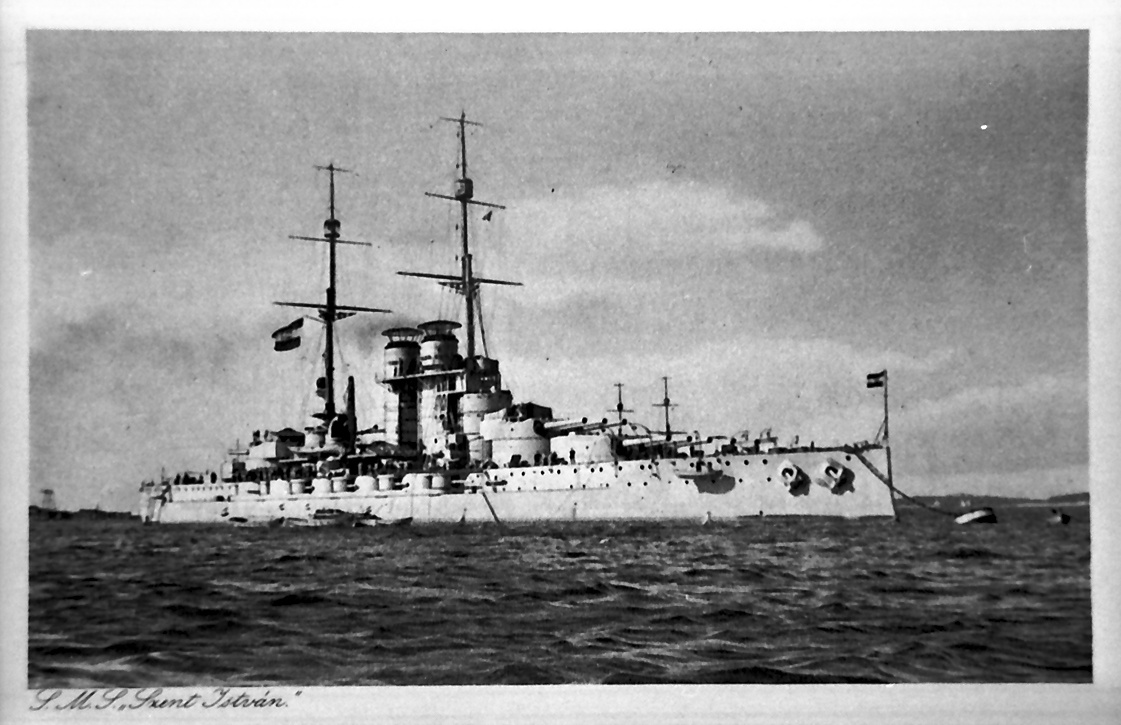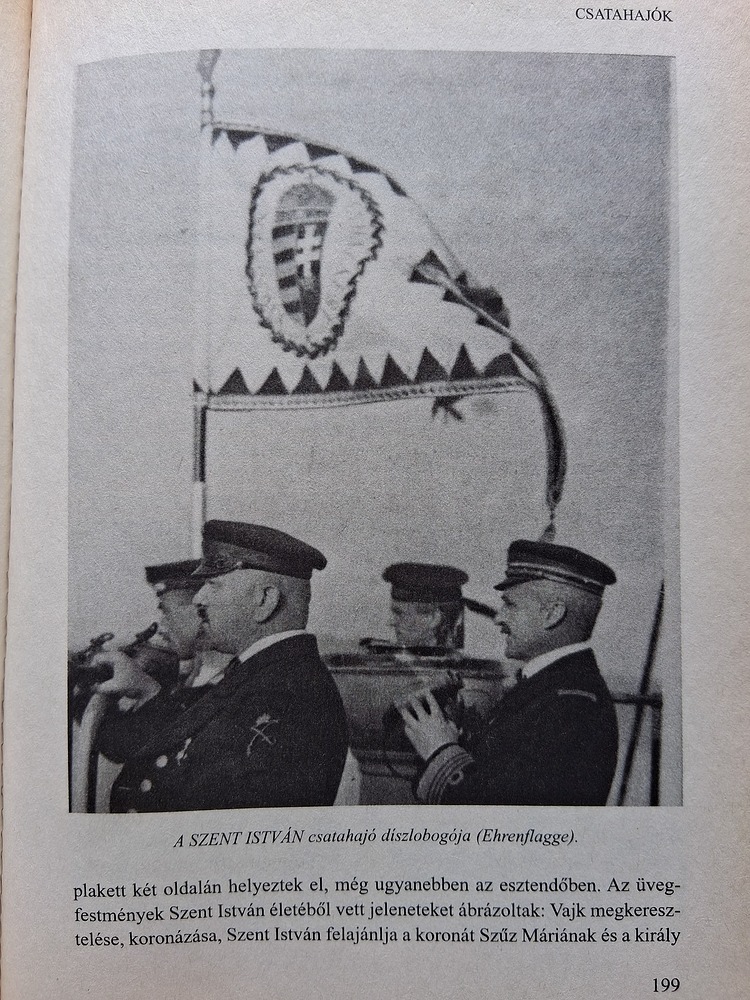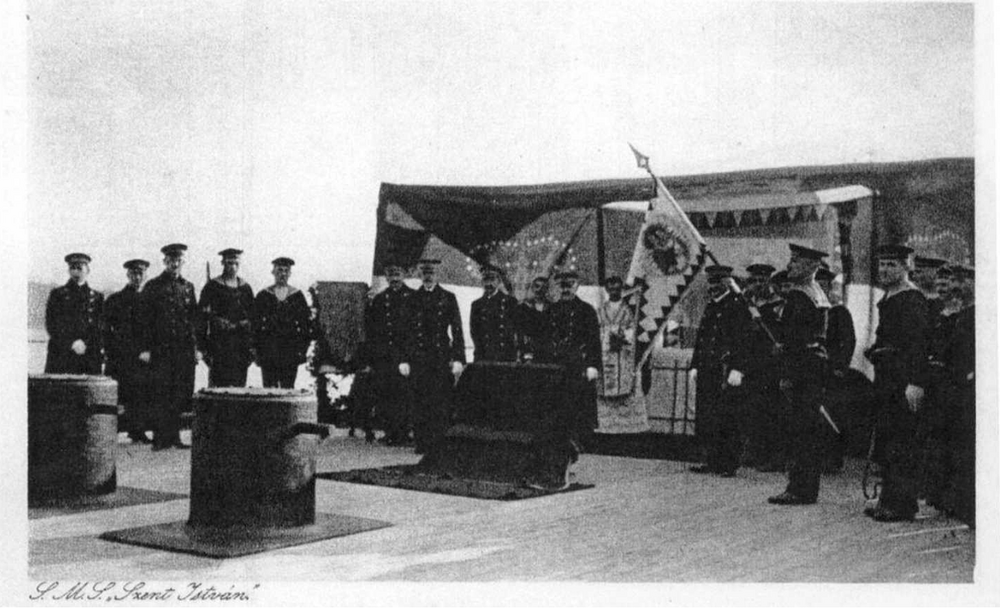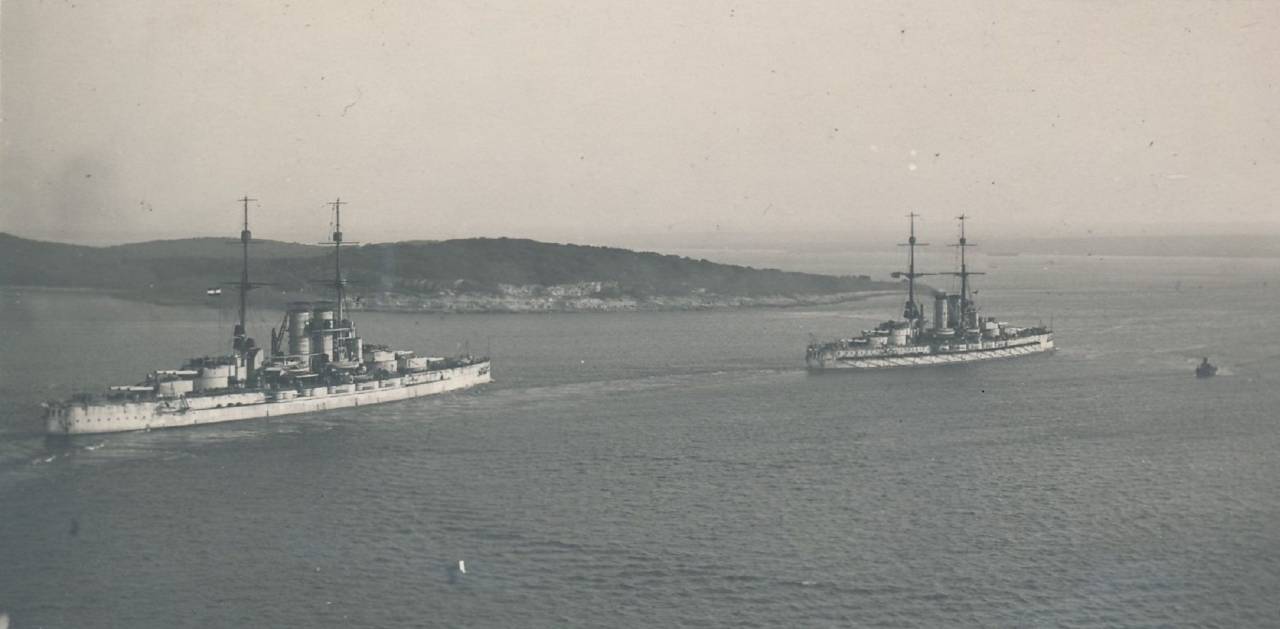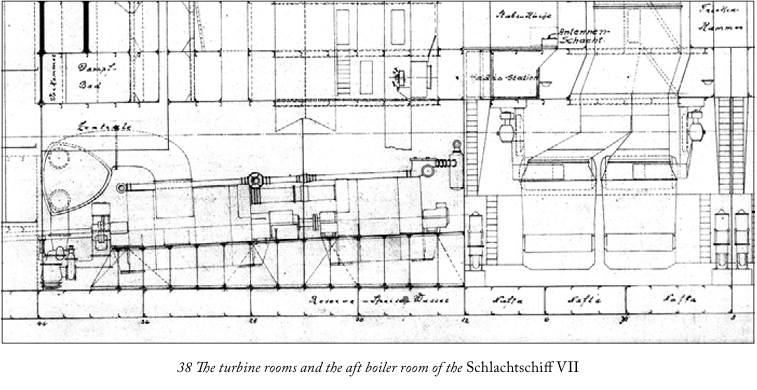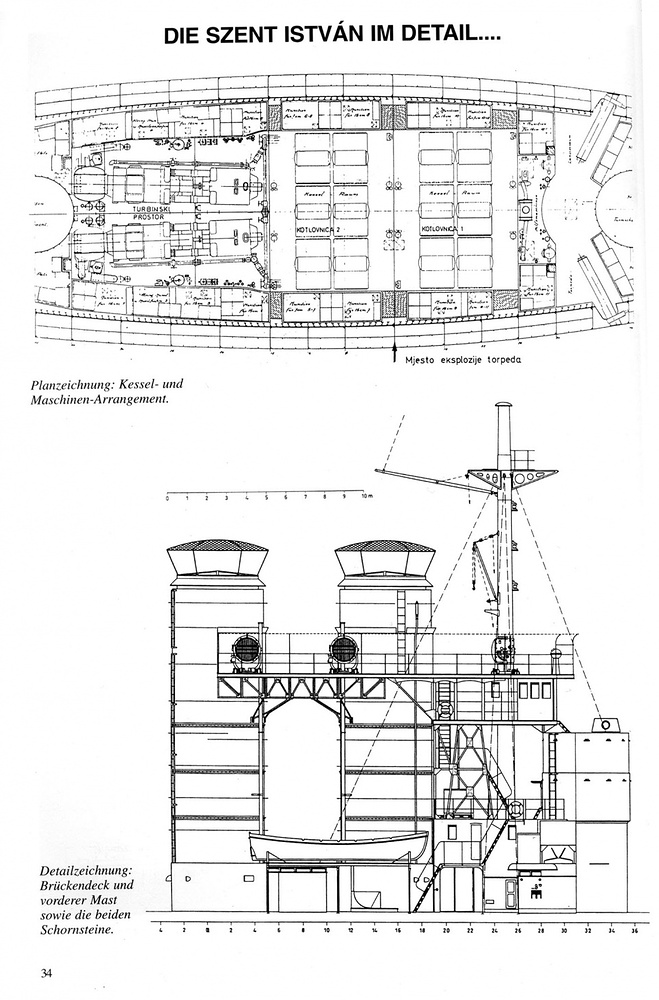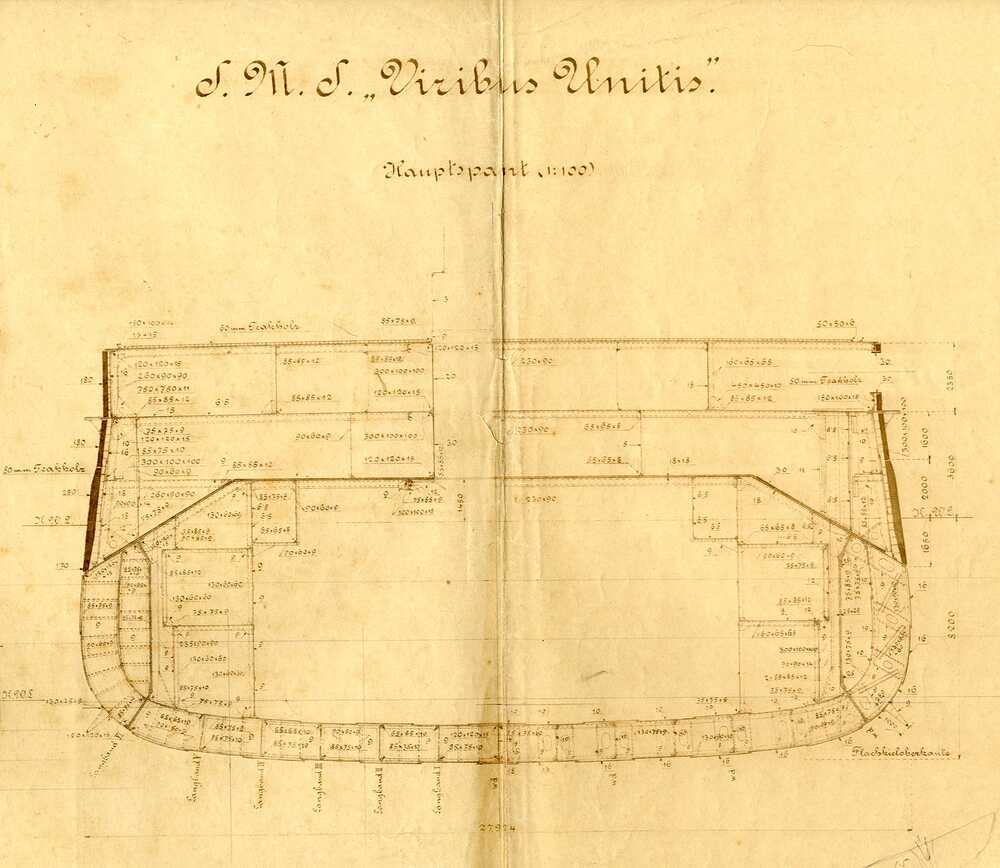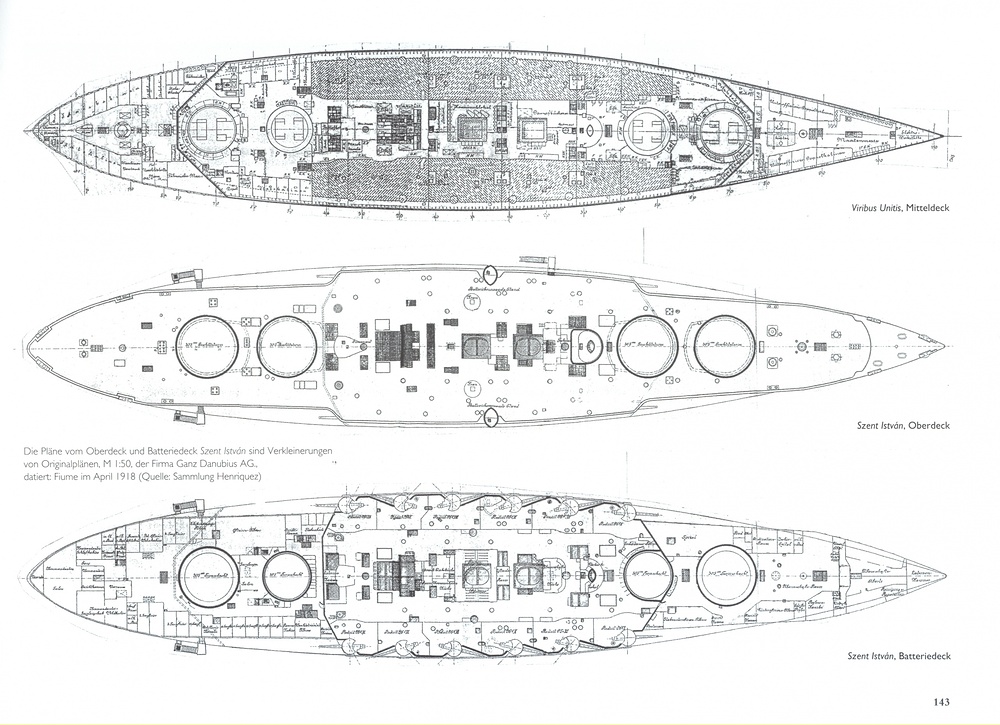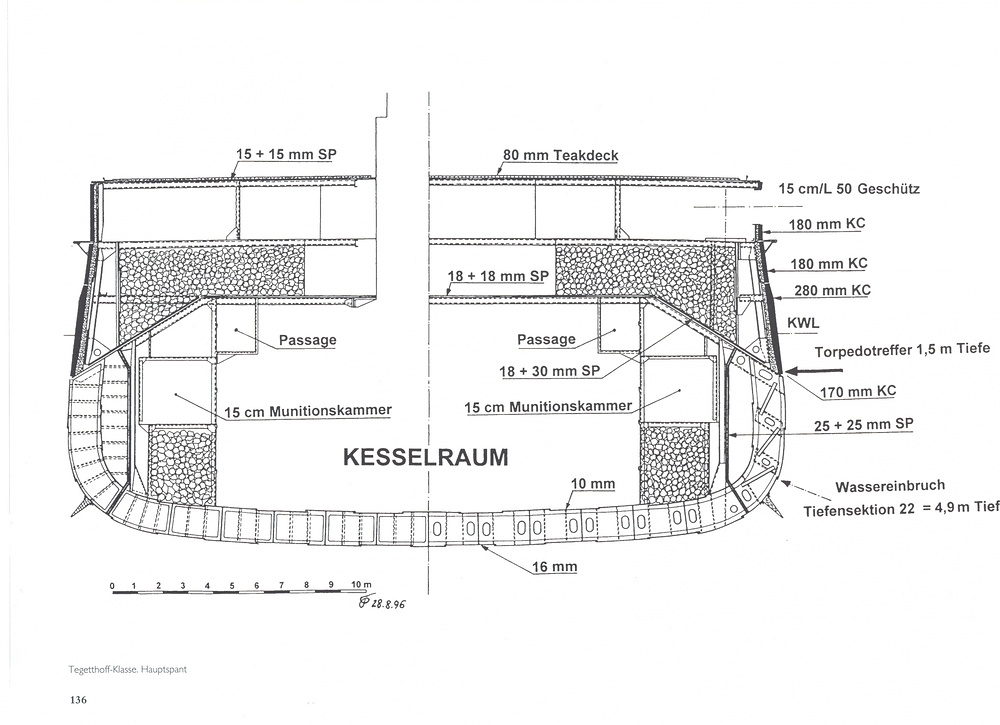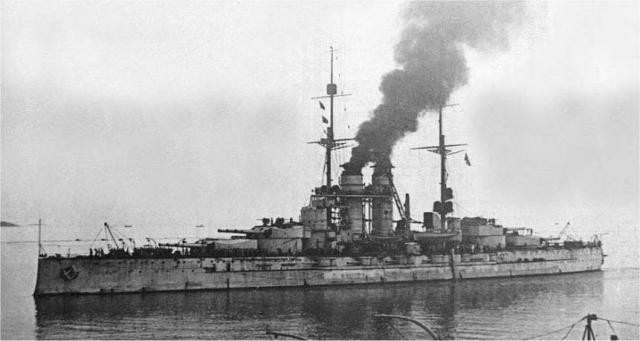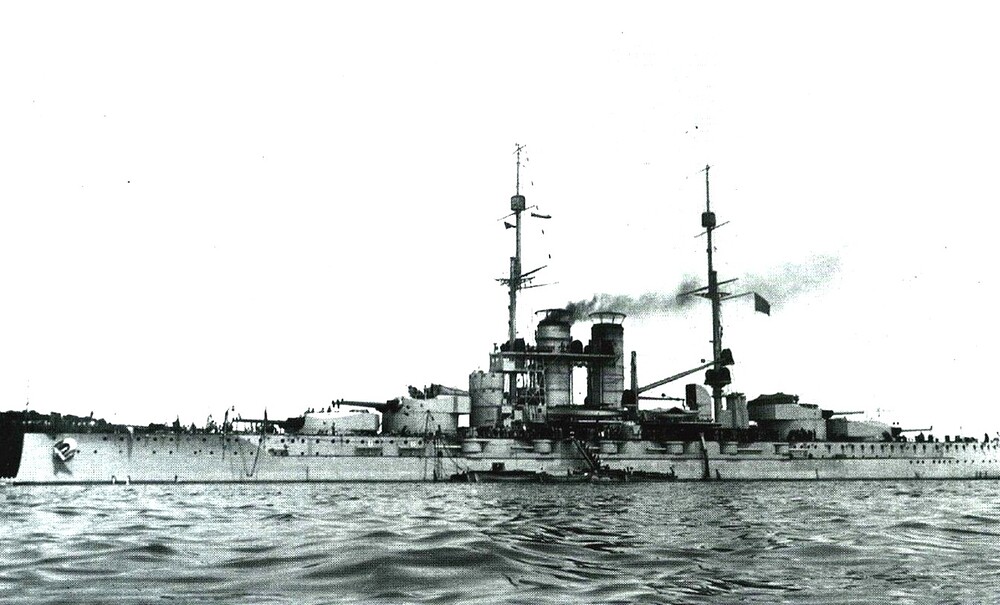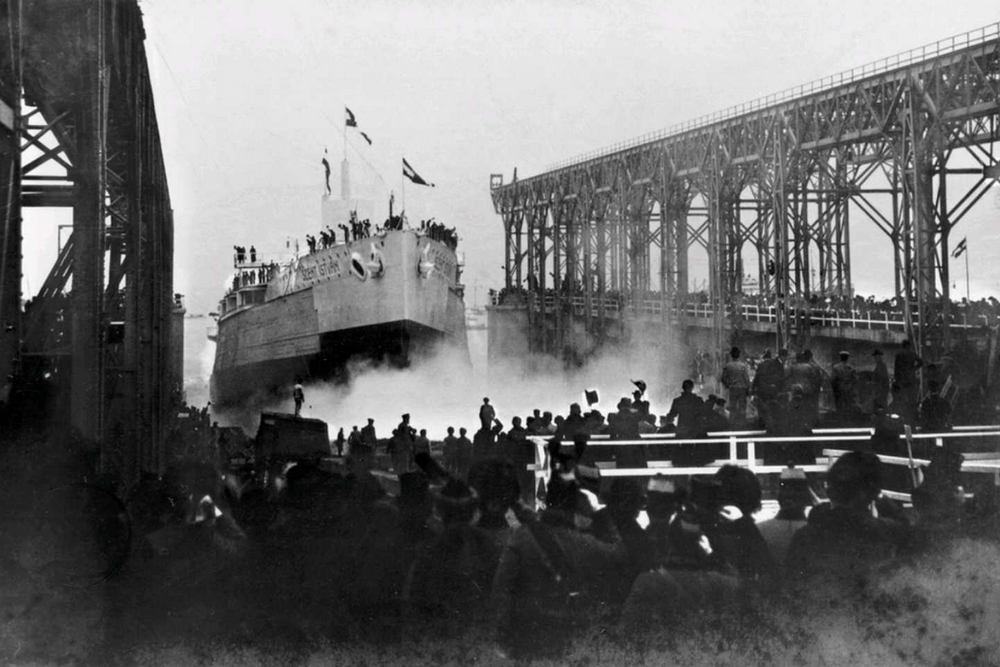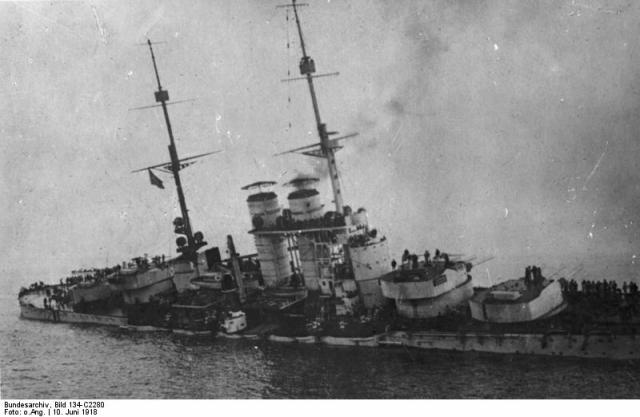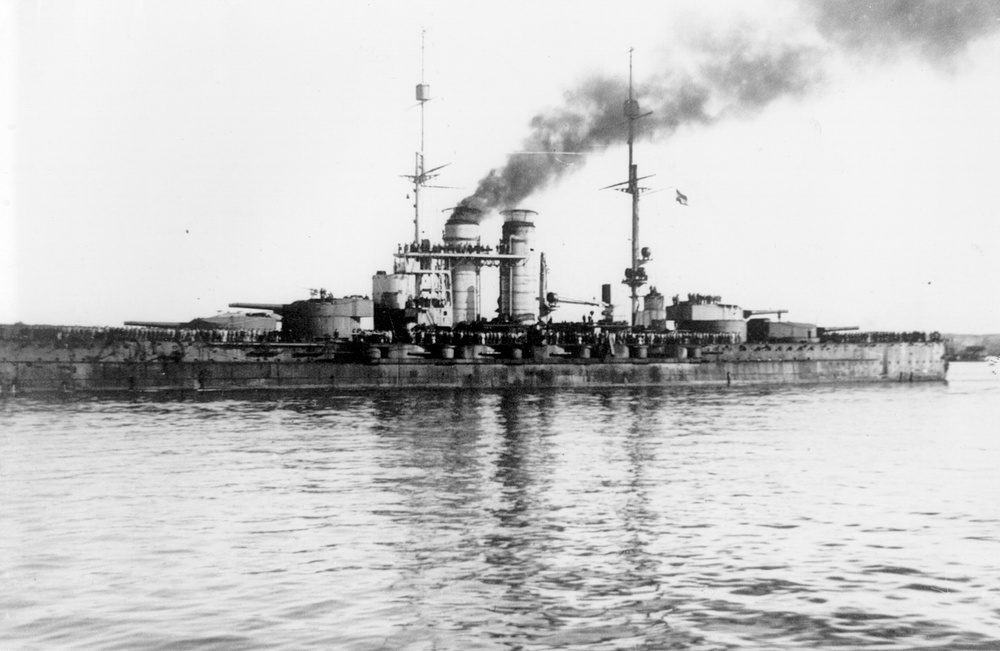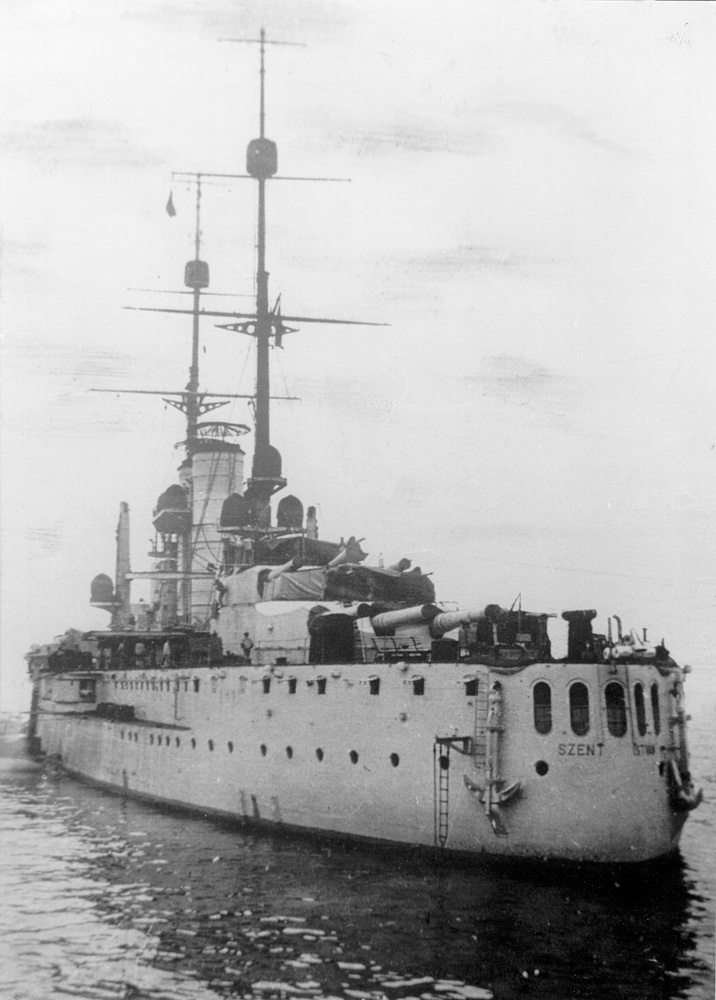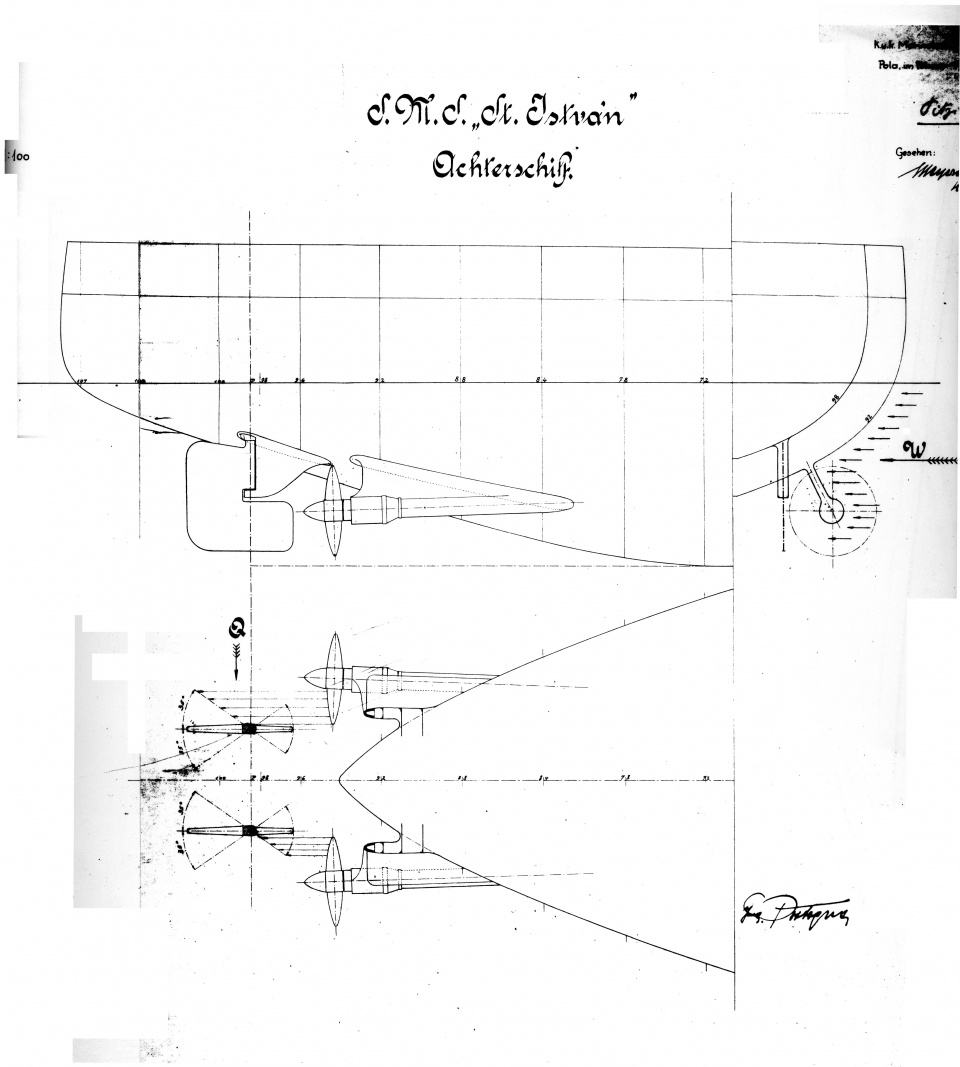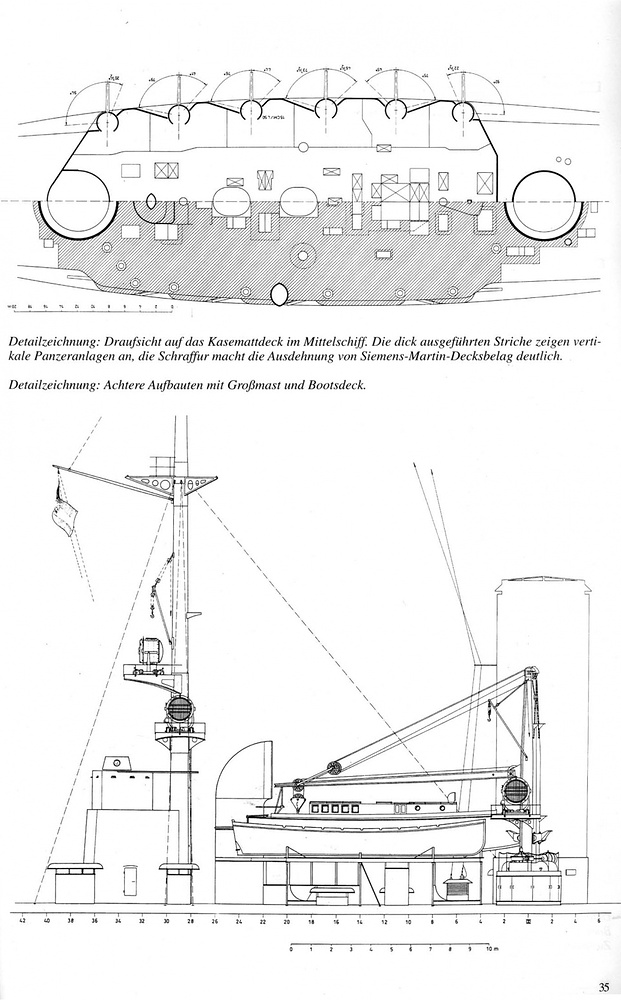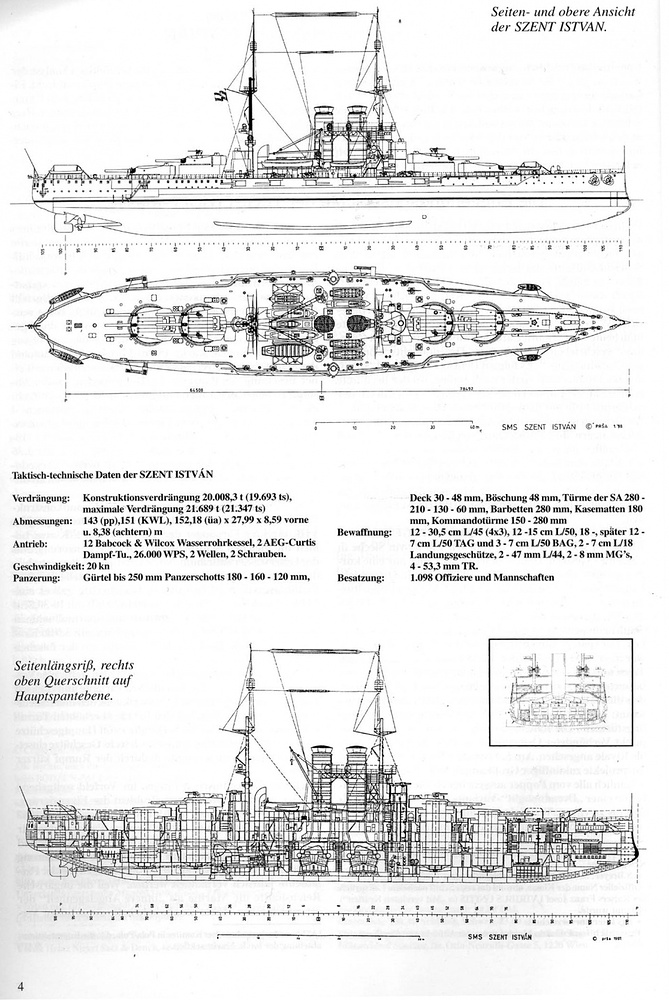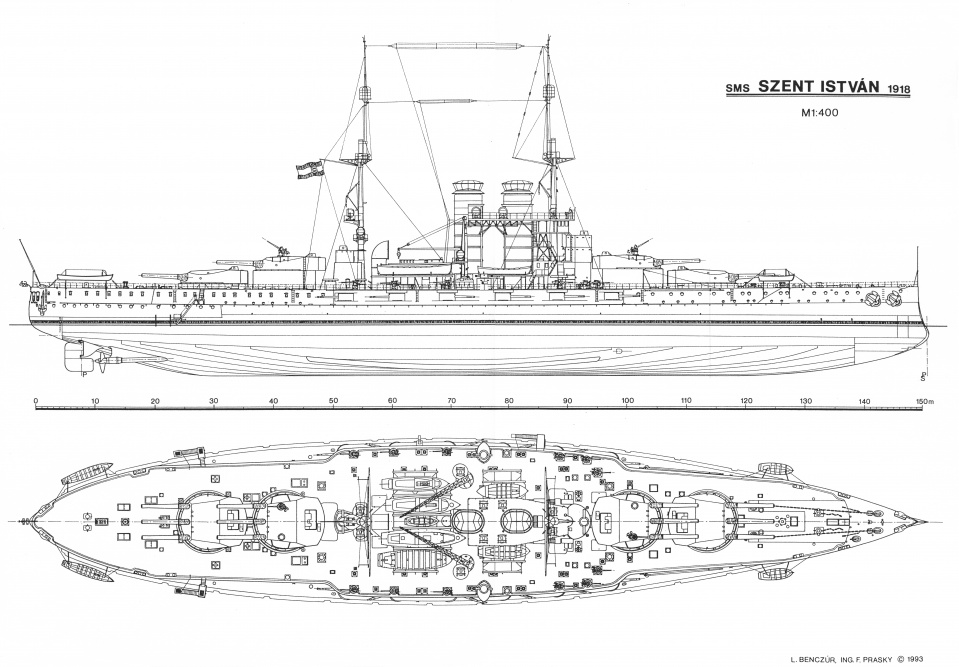- Yes
- No
- Austro-Hungarian subtree in the Italian tech tree.
- Austro-Hungarian subtree in the German tech tree.
- Other
- I voted no.
Welcome to my suggestion for the SMS Szent István(Tegetthoff-class).
The SMS Szent István was the only Hungarian-built dreadnought and as such the crown jewel of the Hungarian naval shipbuilding industry.
She was laid down in the Ganz and Co. Danubius shipyard in Fiume in 1912. January 29, and commissioned in 1915. December 13.
As a 20,000-ton, 152-meter-long battleship, SMS Szent István was five times greater than the second-largest Hungarian-built naval vessel. And despite her flaws and slow manufacturing, SMS Szent István became a symbol of the Hungarian shipbuilding industry’s record performance and of Hungary’s equality in the Monarchy.
She inherited the design flaws of her class, such as ineffective torpedo protection, as the torpedo bulkhead was too close to the outer casing. Other notable flaws that contributed to her sinking were her center of gravity being too high and her displacement being too small, making her highly unstable.
Bad omens also followed the ship since her launch in 1914. January 17, as right after the launch, when the workers released the right side anchor to stop the ship from colliding with a steamer (which gave place to a part of the audience), the anchor chain came loose and hit two factory workers. One of them(Pliskovac) died on the spot, and the other had to have his legs amputated.
After her launch in Fiúme, she was sailed to Pola for the weaponry to be installed and generally to be finished. At this time, the war had already started, so construction slowed due to material shortages; thus, she was only commissioned in December 1915. Exercise followed exercise, and she also took her part in the air defense of Pola.
She was graced by the visit of Charles IV in 1916 and by the German Emperor Wilhelm II. in 1917. At this time, the ship was venturing out less and less on missions as the enemy gained aerial superiority, and air attacks, bombings followed each other from 1917 and onwards.
In conclusion, SMS Szent István was in service for 937 days, and spent 54 days away from Pola, mostly on firing exercises. Thus, her first truly long mission took place in June of 1918, which turned out to be her last one, too.
As misfortune would have it, in the early morning hours of the 9th of June, SMS Szent István and Tegetthoff passed by Captain Luigi Rizzo’s group of two MAS torpedo boats en route back to their home port.
Fortune followed Rizzo as they managed to slip through the protective line of the 77 T and 76 T torpedo gunboats, even tho the distance between the two gunboats was only 500 meters.
The MAS-15 sent its torpedos against Szent István while the MAS-21 targeted Tegetthoff. Unfortunately for SMS Szent István, only the MAS-21 missed, and while two gigantic explosions shook her, the two torpedo boats sped off into the darkness of dawn.
Manufacturer: Ganz és Társa Danubius Gép-, Waggon és Hajógyár Rt. Budapest-Fiume , Kingdom of Hungary, Austro-Hungarian Monarchy.
Spoiler
Fiume in those times was part of Hungary, and not Croatia, as a "Separatum Corpus” attached directly to the Hungarian Crown, created by Empress Maria Theresia in 1779. Half of the inhabitants were ethnic Italians, the other half Croatians. Fiume between 1924-1945 was part of Italy. In 1945, the Italian inhabitants of the city were expelled or killed by the Yugoslav partisans. Before 1918, de jure, Fiume was a Hungarian port. (Krámli Mihály)
Laid down: 1912. January 29
Launched: 1914. January 17
Commissioned: 1915. December 13
Technical data:
-
Length on waterline: 151 m
-
Overall length: 152.18 m
-
Beam: 27.99 m
-
Draught: 8.59 m
Displacement
-
Normal or trial: 20,008 metric tons
-
Full load: 21,689 metric tons
Weights (Viribus Unitis, calculation from August 1912)
Hull: 5,313 tons (25.8%)
Equipment and provisions: 1,488 (7.2 %)
Armament including gun turrets: 3,327 tons (16.2%)
Ammunition: 902 tons (4.4%)
Machinery: 1,486 tons (7.3%)
Electric power plant and equipment: 349 tons (1.79%)
Vertical armor: 5,103 tons (24.8%)
Deck and torpedo protection: 1,686 tons (8.2%) Fuel: 900 tons (4.4%)
Total: 20,554 metric tons
Machinery
-
12x coal-firing Babcock-Wilcox water tube boilers with oil spraying and superheaters
-
Boilers in two boiler rooms, two funnels.
-
2x sets of AEG-Curtiss turbines on two shafts
-
2x screws of 4000 mm diameter
Turbines divided in four watertight spaces, separated by a centerline longitudinal bulkhead and a transversal bulkhead
The Babcock-Wilcox boilers of the Schlachtschiff VII were heavier, but superior and had greater efficiency than the Yarrow ones in that they could produce enough steam (200,000 kg per hour) for eight hours, unlike the STT-built Yarrow ones. The Babcock-Wilcox boilers were fitted also with superheaters, which the Yarrow boilers of the STT-built dreadnoughts lacked. The dynamos, the generators, and the coolant pumps were manufactured by the Ganz Villamossági Rt. (Ganz Electric Ltd). Mihály Krámli AUSTRO-HUNGARIAN BATTLESHIPS AND BATTLESHIP DESIGNS 1904-1914. page 83.
Designed power: 25,000 SHP
-
Viribus Unitis: 27,383 SHP
-
Tegetthoff: 25,638 SHP
-
Prinz Eugen 27,183 SHP
-
Szent István: 26,400 SHP
Designed speed: 20 knots
-
Viribus Unitis: 20.49 knots
-
Tegetthoff: 20.31 knots
-
Prinz Eugen: 20.41 knots
-
Szent István: N/A
Range: 5,000 nautical miles
Fuel: Coal 1,845 tons or briquette 1,519 tons, oil 267 tons
Electric power
-
4×300 KW turbine-driven DC dynamos
-
2×150 KW turbine-driven DC dynamos
-
2×150 KW motor-driven DC dynamos
-
2xAC generators
Armor
(KC: Krupp cemented, K: Krupp non-cemented, SP: Spezialstahl, SM: Siemens-Martin)
-
Belt: 280 mm KC, lower part tapered to 180 mm
KC on 80 mm teak and 18mm iron plating -
Upper belt: 180 mm KC
-
Casemate: 180 mm KC
-
Bow/stern: 150/150 mm KC
-
Fore and aft armored bulkheads: 150 mm KC
-
Torpedo bulkhead: 25+25 mm SP
-
Conning tower front and sides/back/roof: 280/150 mm KC/60 mm SM Aft conning tower
-
15 cm control towers front and sides/roof: 180 mm KC/40 mm SM
-
Barbettes: 280 mm KC
-
Armored deck sloped parts/horizontal part: 18 mm and 18+30 mm/18+18 mm SM
-
Gun turrets face and sides/inclined parts/roof: 280 mm/200-130 mm KC/60 mm K
Armament
12x30.5 cm/45 K10 Škoda guns with sliding wedge breech (Krupp-system)
Weight of the gun turrets lower/superimposed 680/690 tons
Weight of barrel with breech: 54.25 tons Elevation: -4/+20°
Elevation/train rate: 3° per sec/3° per sec
Allowance for each gun: 76
Projectile’s weight: 450 kg
Muzzle velocity: 800 mps
Rate of fire: 1-2 rounds per minute
Range: 22,000 m later 19,000 m
12x15 cm/50 Škoda guns with sliding wedge breech in casemates
Weight of a gun with shield: 19,8 tons
Weight of the barrel: 6,085 kg
Elevation: -6/+15°
Weight of the ammunition: 80 kg
Allowance for each gun: 180
Projectile’s weight: 45.5 kg
Muzzle velocity: 880 mps
Rate of fire: 6 rounds per minute
Range: 15,000 m
18x7 cm/50 (6.6 cm) Skoda guns with sliding wedge breech on central pivots
Weight of a gun with mounting: 2300 kg
Elevation: -6.5+20°
Weight of the ammunition: 8.5 kg
Allowance for each gun: 400
Projectile’s weight: 4.5 kg
Muzzle velocity: 850 mps
Rate of fire: 20 rounds per minute
4x7 cm/50 (3x7 cm) (6.6 cm) Škoda AA guns with sliding wedge breech on central pivots
Weight of a gun with mounting: 2,030 kg
Elevation: -5+90"
Weight of the ammunition: 8.5 kg
Allowance for each gun: 200
Projectile’s weight: 4.5 kg
Muzzle velocity: 830 mps
Rate of fire: 20 rounds per minute
4x53.3 cm Whitehead submerged torpedo tubes (1 bow, 1 stern, 1-1 broadsides)
Allowance: 3-3 for fore & aft tubes, 4-4 for broadside tubes
Torpedo’s weight: 1,336 kg
Overall length: 6.3 m
Explosive charge: 180 kg
Ammunition:
30,5cm/45 K10 Škoda:
Spoiler
Shell diameter: 305mm (12-inch)
Shell types: APC, SAPC
Shell specifications:
APC: “30,5cm bekappte Panzergranate L/5” - 454kg, 131.9cm long, 4.0kg TNT bursting charge.
SAPC: “30,5cm bekappte Zündergranate L/5” - 450kg, 131.9cm long, 26.7kg TNT bursting charge.
Maximum range: 22,000m at 20 degrees elevation, with APC shells.
Penetration:
APC: 605mm at 1,000m (using DeMarre), 502mm at 5,000m (penetration tests and DeMarre).
SAP: 411mm at 1,000m (using DeMarre).
Velocity: 800m/s
Reload: 3 rounds per minute with 18-shell “ready ammunition”, 2 rounds per minute afterwards.
Mountings: Three-gun turrets, firing angles of -4/+20 degrees.
15cm/50 K10 Škoda:
Spoiler
Shell diameter: 149.1mm (5.9-inch)
Shell types: AP, HE
Shell specifications:
AP: “15cm Panzergranate” - 45.5kg, based on various other 15cm shells, probably ~900g bursting charge.
HE: “15cm Sprenggranate” - 45.5kg, 3.0kg TNT bursting charge.
Maximum range: 15,000m at 15 degrees elevation, with AP shells.
Penetration:
AP: 261mm at 1,000m (using DeMarre).
HE: N/A
Velocity: 880m/s
Reload: 6 rounds per minute.
Mountings: Single-gun casemates, firing angles of -6/+15 degrees.
7cm/50 K10 Škoda TAG and 7cm/50 K16 Škoda BAG
Spoiler
Shell diameter: 66mm (2.66-inch)
Shell types: HE
Shell specifications:
HE: “7cm Sprenggranate” - 4.5kg, 264mm long, 1.6kg TNT bursting charge.
Maximum range, K10: 8,000m at 20 degrees elevation - K16: 5,000m Anti-Aircraft ceiling.
Penetration: N/A
Velocity: 880m/s
Reload: 20 rounds per minute
Mountings: Single-gun swivel mounts on deck and turrets,
-
K10: firing angles of -10/+20 degrees
-
K16: firing angles of -6/+90 degrees
(Note: TAG was the abbreviation used for “Torpedoboot-Abwehr Geschütz” - “Anti-Torpedoboat Gun”, and BAG was the abbreviation for “Ballon-Abwehr Geschütz” - “Anti-Airship Gun”)
53cm L6.3 Whitehead
Spoiler
Torpedo diameter: 530mm
Torpedo specifications:
1,336kg, 6.30m long, 180kg TNT explosive charge.
Maximum range: 1,000m at 41 knots (75.9km/h) or 10,000m at 29 knots (53.7km/h).
Reloads: 3 torpedoes per tube; one in the tube and 2 spare reloads
Mountings: 4 single tubes, mounted below the water on the bow, stern, and on both sides of the ship.
Fire control
-
2x3,658 mm (12 feet) Barr&Strouds rangefinders on the conning towers
-
4x2,743 mm (9 feet) Barr&Strouds rangefinders in the gun turrets
-
2x2,743 mm (9 feet) Barr&Strouds rangefinders in the 15 cm fire control towers
-
11x110 cm searchlights
Boats
Two 13-ton electric boat cranes, 1x13-ton steam barge
1x9 ton and 1×5 ton motor barges
2x4.7 ton sailing barges
4x cutters
1x rescue cutter
2x jolly boats
2x motor-gigs 4x small jolly boats
Crew: 1056 men and 38 officers
Sources:
Császári és királyi hadihajók Dr. Csonkaréti Károly
Austro-hungarian battleships and battleship design 1904-1914
Austro-hungarian battleships and battleship design 1904-1914, Krámli Mihály. PDF
NavWeaps - Austro-Hungarian Naval Guns
NavWeaps - Austro-Hungarian Torpedoes
THE TEGETTHOFF CLASS.: Austria-Hungary’s Dreadnoughts (1909-1925) (Warships of the First World War)
